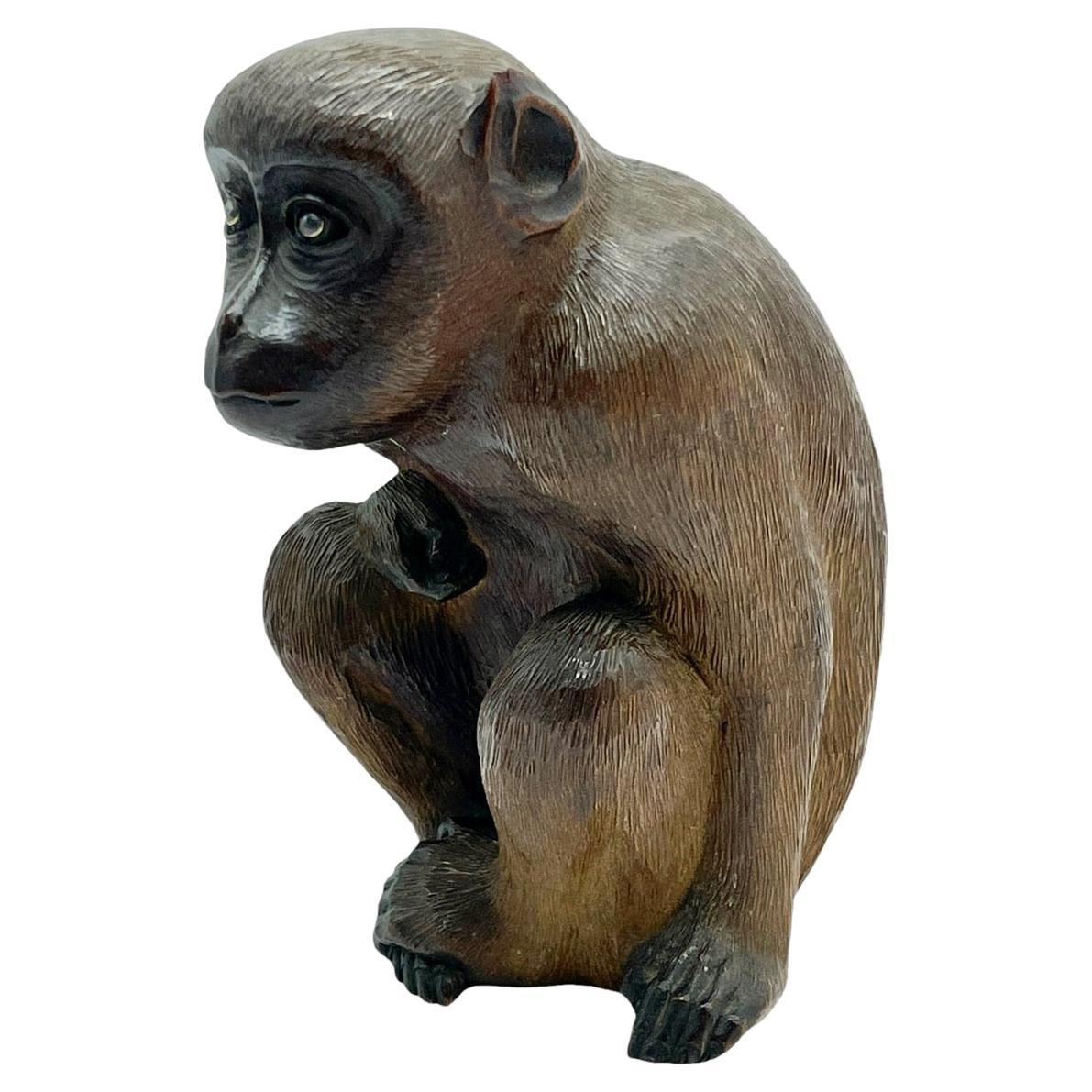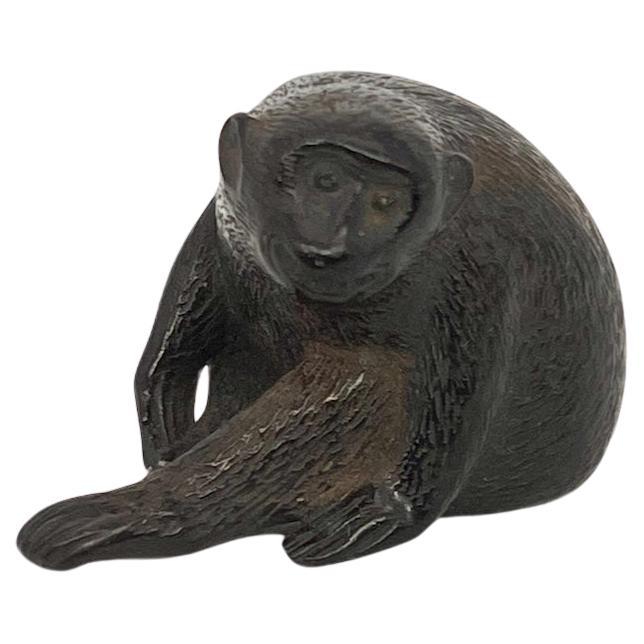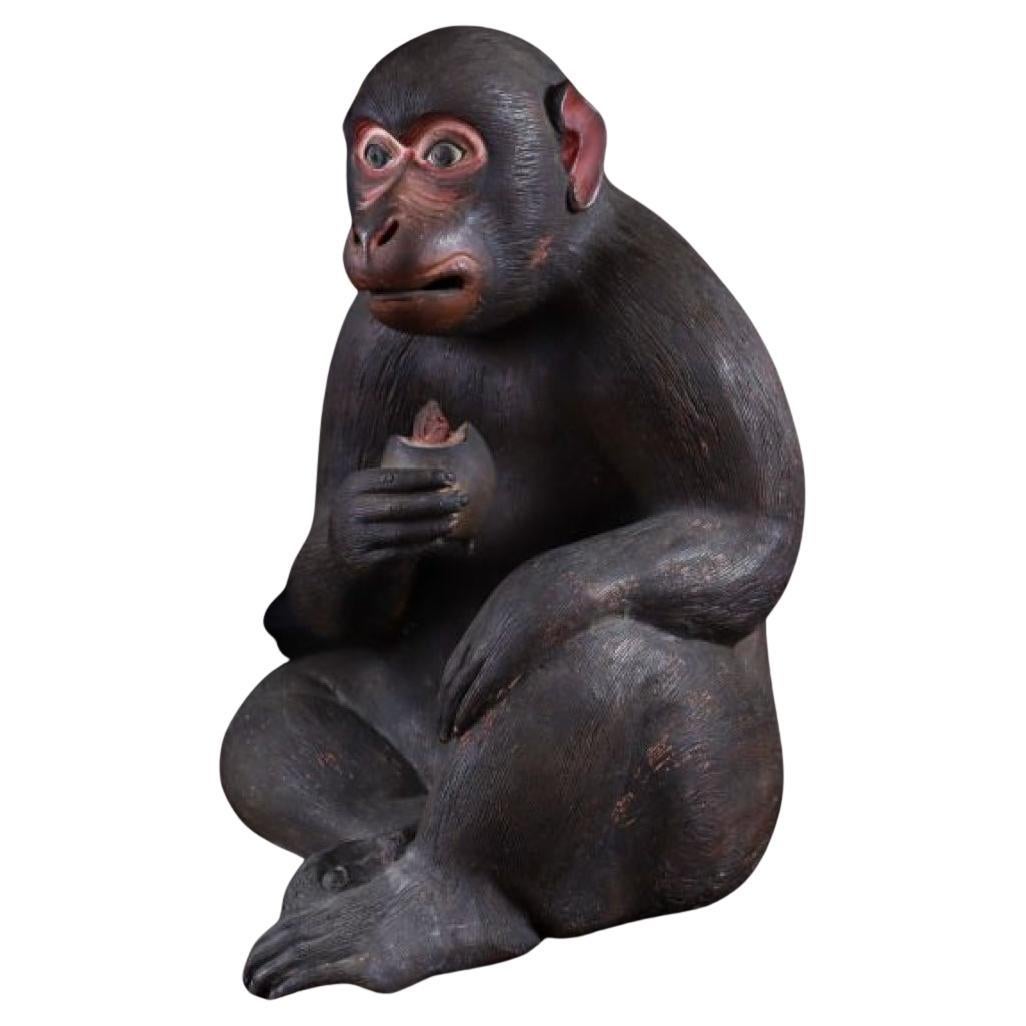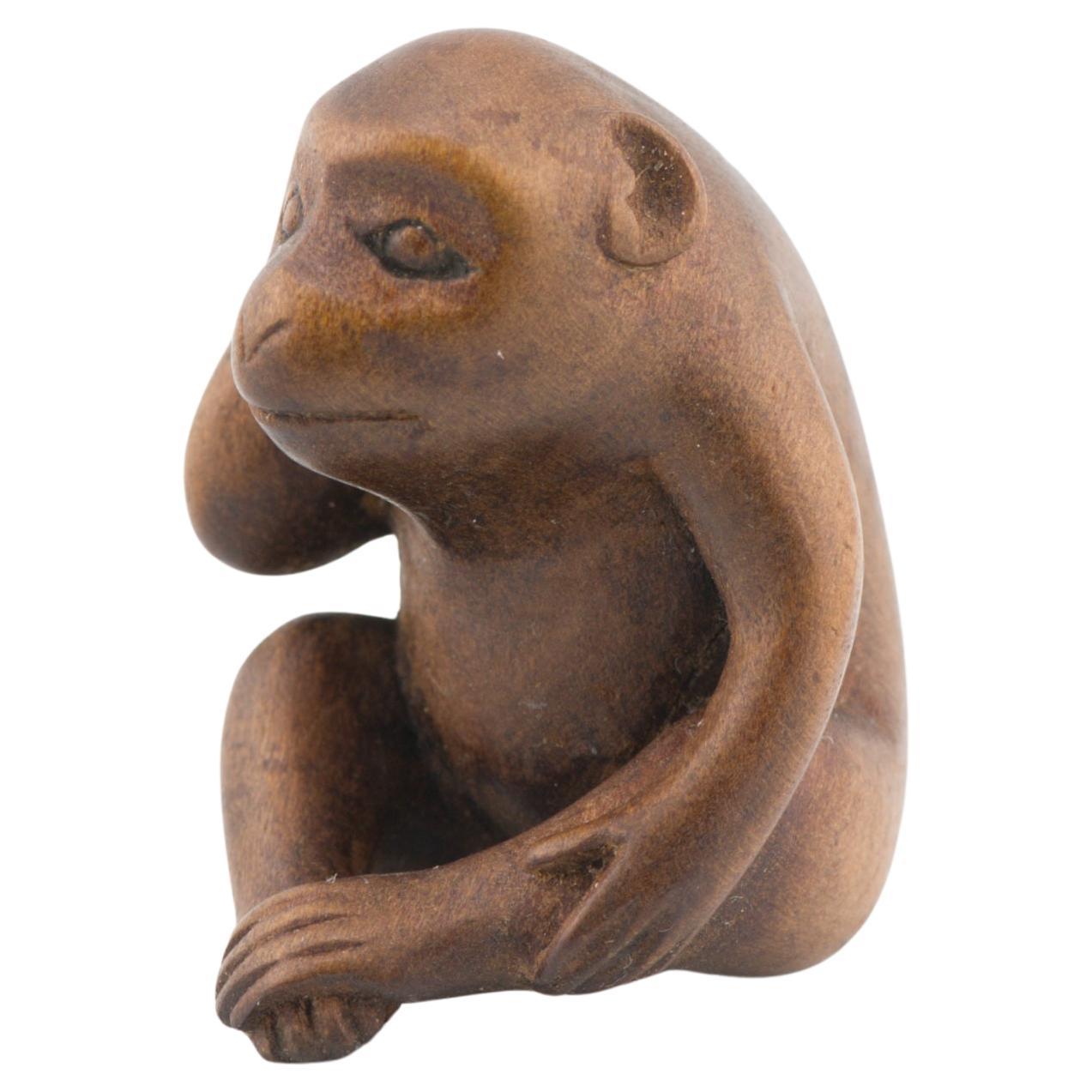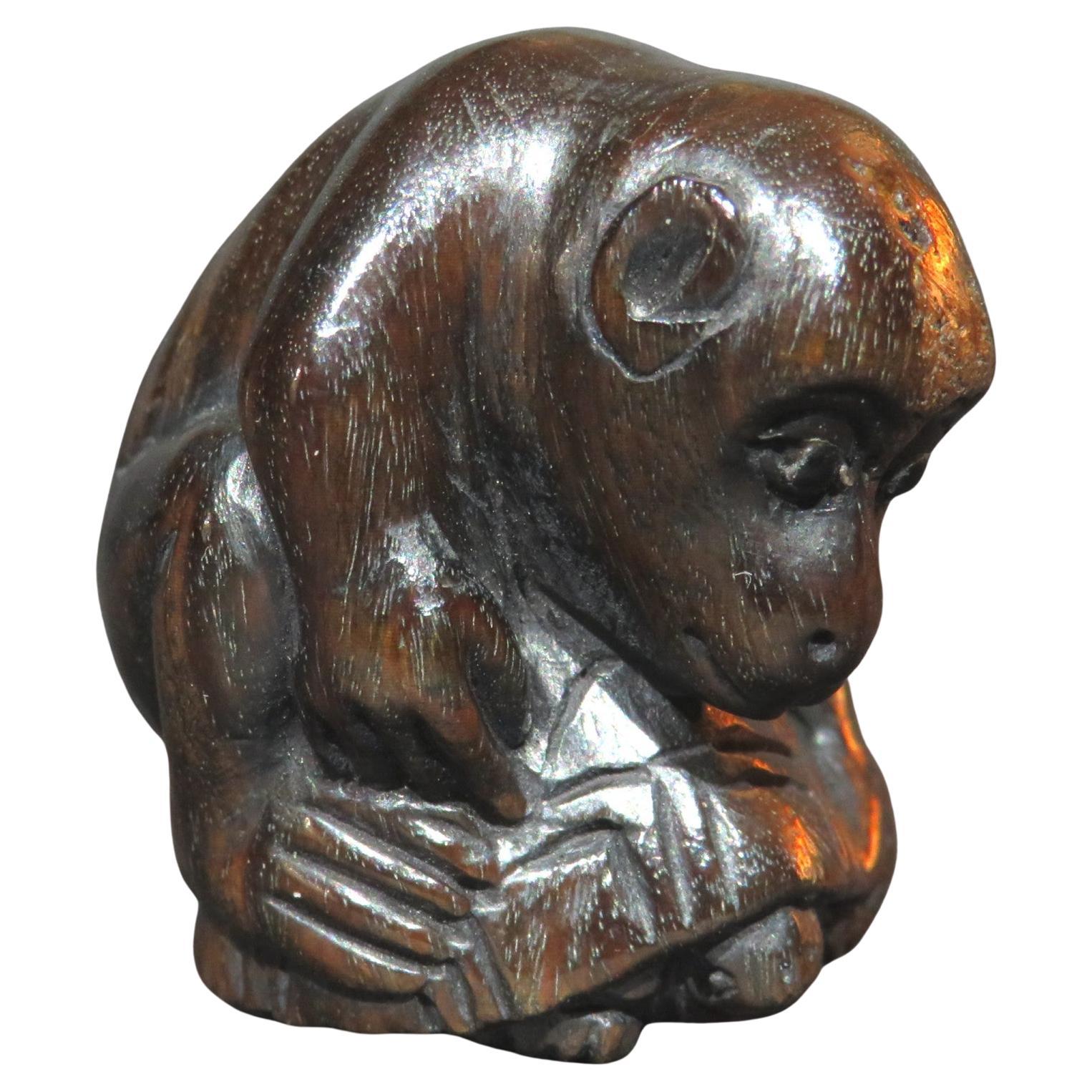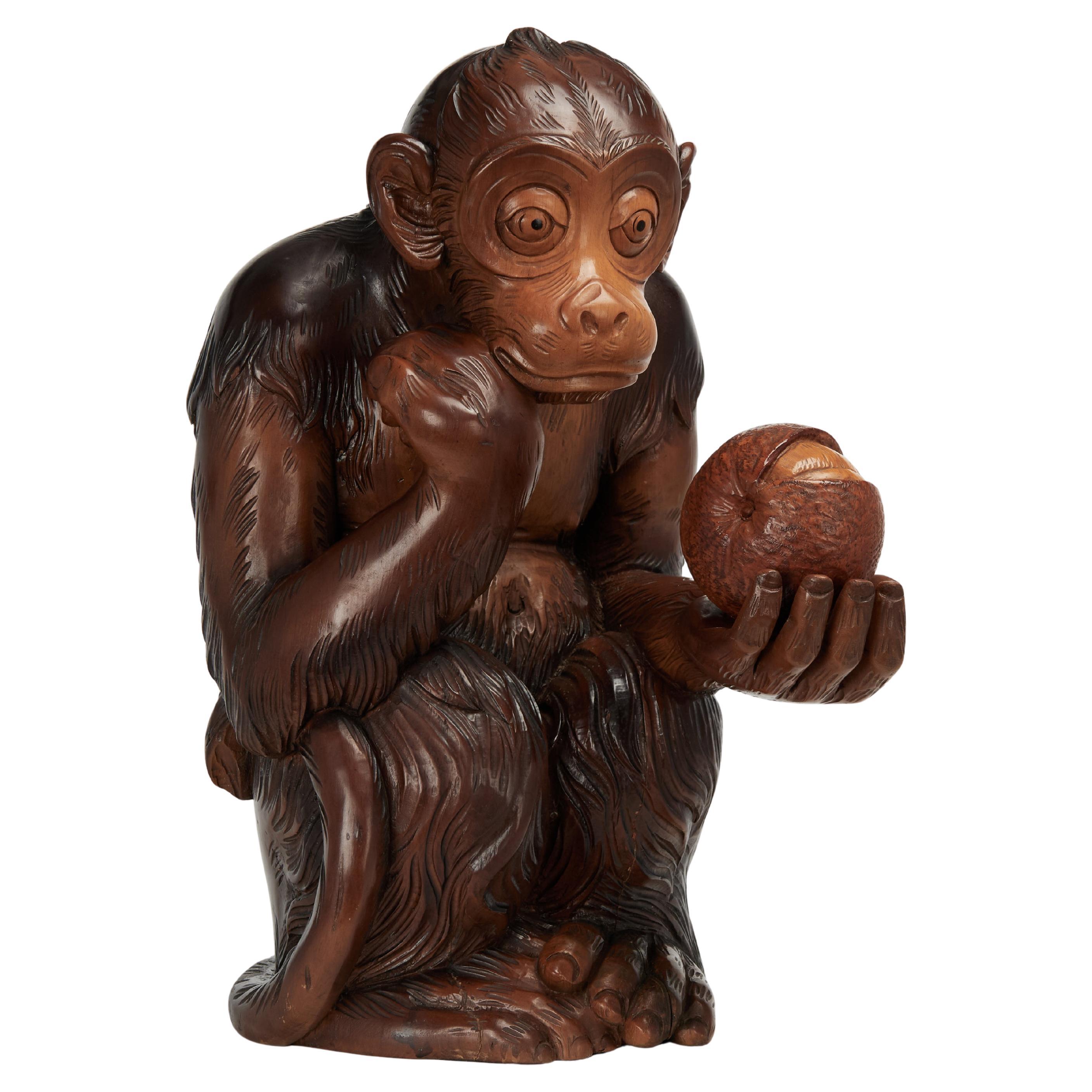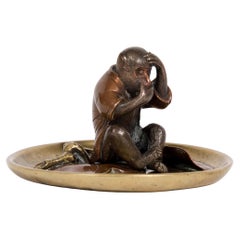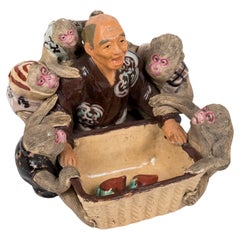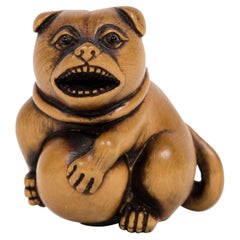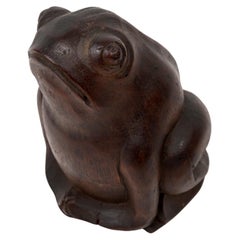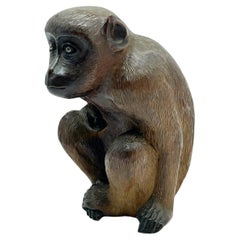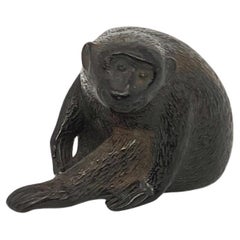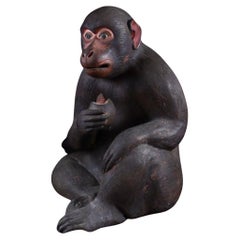Items Similar to Japanese bamboo sculpture of a Monkey holding Longevity Peaches in its two hands
Want more images or videos?
Request additional images or videos from the seller
1 of 7
Japanese bamboo sculpture of a Monkey holding Longevity Peaches in its two hands
$4,192.09
£3,106.57
€3,500
CA$5,723
A$6,366.60
CHF 3,337.45
MX$77,798.31
NOK 42,498.29
SEK 40,006.26
DKK 26,648.69
Shipping
Retrieving quote...The 1stDibs Promise:
Authenticity Guarantee,
Money-Back Guarantee,
24-Hour Cancellation
About the Item
Chiseled wood sculpture representing a seated monkey holding peaches of longevity in his hands. The impression of the fur is quite realistic, and its eyes are enhanced with black lacquer.
The figure of the monkey with longevity peaches is a popular image in China, however this subject was also widely used by the Japanese.
According to the legend the monkey Sun, king of monkeys, upset that he was not invited to the banquet of the Queen Mother, entered the garden of the goddess Xiwangmu in the mountains of Kun Lun and ate all the heavenly peaches she grew there. He became immortal.
Signed by Tamon Tô (多門刀) below.
Japan – Meiji era (1868-1912)
Height: 8.47 in (21.5 cm) - width: 5.44 in (13.8 cm) - depth: 5.6 in (14.2 cm)
- Dimensions:Height: 8.47 in (21.5 cm)Width: 5.44 in (13.8 cm)Depth: 5.6 in (14.2 cm)
- Style:Meiji (Of the Period)
- Materials and Techniques:
- Place of Origin:
- Period:
- Date of Manufacture:1868-1912
- Condition:Wear consistent with age and use.
- Seller Location:PARIS, FR
- Reference Number:Seller: 2020-8071stDibs: LU8311242721102
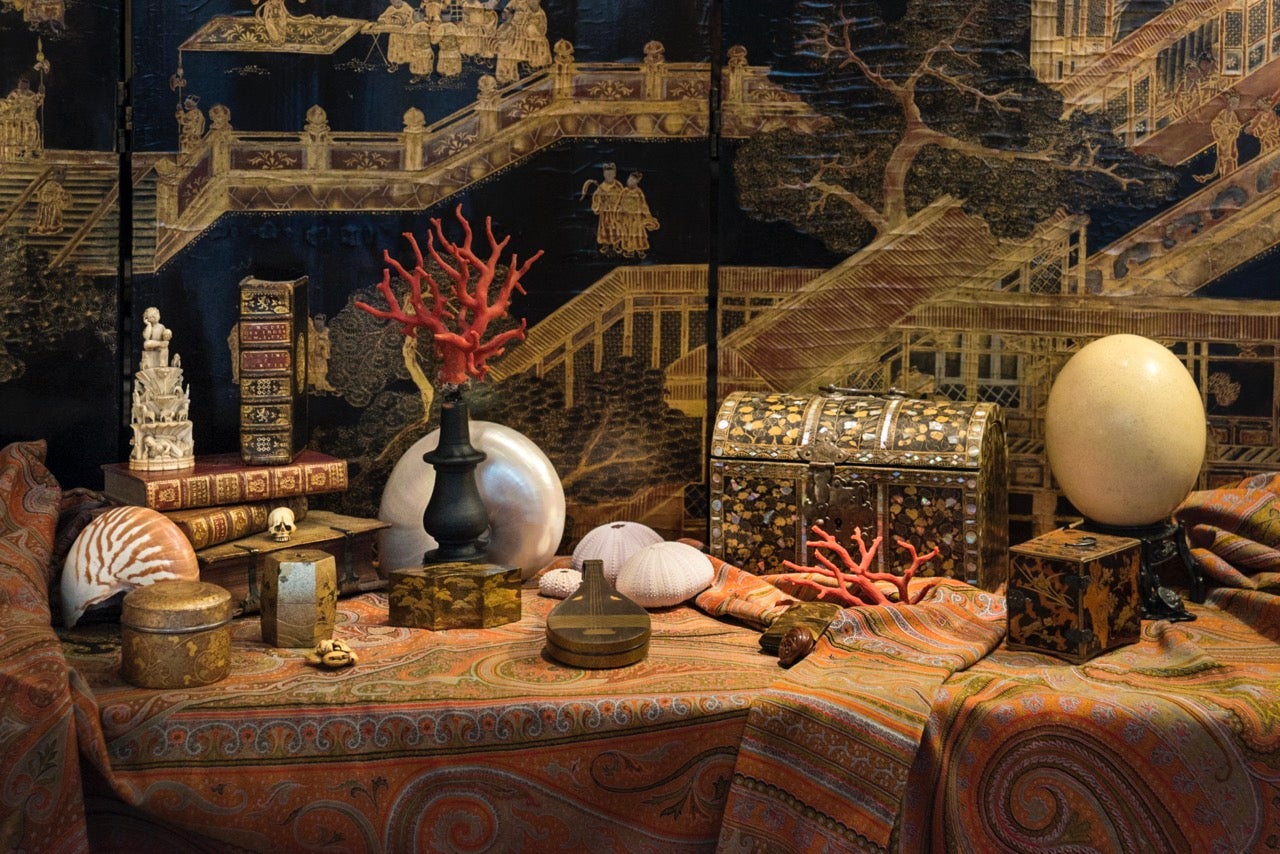
About the Seller
No Reviews Yet
Vetted Professional Seller
Every seller passes strict standards for authenticity and reliability
Established in 2013
1stDibs seller since 2023
Typical response time: Several days
- ShippingRetrieving quote...Shipping from: PARIS, France
- Return Policy
Authenticity Guarantee
In the unlikely event there’s an issue with an item’s authenticity, contact us within 1 year for a full refund. DetailsMoney-Back Guarantee
If your item is not as described, is damaged in transit, or does not arrive, contact us within 7 days for a full refund. Details24-Hour Cancellation
You have a 24-hour grace period in which to reconsider your purchase, with no questions asked.Vetted Professional Sellers
Our world-class sellers must adhere to strict standards for service and quality, maintaining the integrity of our listings.Price-Match Guarantee
If you find that a seller listed the same item for a lower price elsewhere, we’ll match it.Trusted Global Delivery
Our best-in-class carrier network provides specialized shipping options worldwide, including custom delivery.More From This Seller
View AllJapanese Monkey Suaka
Located in PARIS, FR
Bronze sculpture of a monkey laying on a golden brass tray adorned with copper
leaves. This sculpture is made of sentoku and shibuchi bronze with a very interesting
suaka patina.
...
Category
Antique Late 19th Century Japanese Sculptures and Carvings
Materials
Bronze
$2,155
Japanese Sumida-Gawa sculpture of a man distributing peaches to its monkeys
Located in PARIS, FR
Polychrome sculpture in Sumida-gawa stoneware, also called Sumida-yaki, representing an old man surrounded by five monkeys in front of a basket containing two nuts. Glazed clothes an...
Category
Antique Late 19th Century Japanese Meiji Ceramics
Materials
Enamel
Japanese Puppy Nestuke in boxwood
Located in PARIS, FR
Netsuke in boxwood representing a puppy with incrusted eyes made of buffalo horns. Its mouth is open, as if it was barking, it also wears a knotted collar and holds a ball between it...
Category
Antique Mid-19th Century Japanese Edo Sculptures and Carvings
Materials
Boxwood
Japanese bamboo sculpture of a seated toad realised in the rhizome
Located in PARIS, FR
Bamboo sitting toad. The node of the wood is used as the base of the statuette.
The toad and the frog, referred to by the same term in Japanese (kaeru) are associated with good luck...
Category
Early 20th Century Japanese Taisho Sculptures and Carvings
Materials
Bamboo
Netsuke in the form of a No mask representing the character of Hyottoko
Located in PARIS, FR
Boxwood netsuke representing the mask of Hyottoko in Noh theatre.
Hyottoko is a legendary comic character, considered to be a fire god in certain regions of north-east Japan. The sha...
Category
Antique Late 19th Century Japanese Edo Sculptures and Carvings
Materials
Boxwood
Japanese okimono sculpture of a lying puppy with its head facing its rear
Located in PARIS, FR
Bronze okimono sculpture with a deep brown patina, of a lying puppy, probably of shiba inu breed, represented with its head facing its rear. This kind of subject is common in traditi...
Category
Antique Late 19th Century Japanese Meiji Metalwork
Materials
Bronze
You May Also Like
19th Century 'Meiji Period' Japanese Carved Wood Seated Monkey Sculpture
Located in North Miami, FL
19th Century (Meiji Period) Japanese hand-carved wood seated monkey. The eyes are inlaid and made of glass. The fur and details are very realistic. The piece is signed on the bottom ...
Category
Antique 19th Century Japanese Meiji Animal Sculptures
Materials
Glass, Wood
A MAGNIFICENT WOODEN NETSUKE OF A MONKEY. Edo period.
Located in London, GB
A MAGNIFICENT WOODEN NETSUKE OF A MONKEY.
Edo period.
A netsuke of a monkey seating in a leisurely manner, extremely realistically carved with a great expression on his face,the ...
Category
Antique Early 19th Century Japanese Sculptures and Carvings
Materials
Boxwood
Rare Edo Period traditional Dojin-yaki finely Carved Monkey Figurine
Located in Fukuoka, JP
This exceptional Edo-period sculpture depicts a seated monkey in an incredibly lifelike manner, with finely carved details and expressive features. Made using traditional Dojin-yaki ...
Category
Antique 18th Century Japanese Edo Sculptures and Carvings
Materials
Clay
Antique Netsuke Japanese Monkey Thinking Sculpture Meiji Period, 19/20th Century
Located in Amsterdam, Noord Holland
Lovely and very detailed piece. Unsigned. Japan 19th or 20th century.
Provenance: From the collection of Clemens Merkelbach van Enkhuizen, A well known Dutch painter and artist from...
Category
Antique 19th Century Japanese Edo Animal Sculptures
Materials
Porcelain
A Signed Japanese Netsuke of a Monkey Riding a Turtle, Showa Period
Located in Ottawa, Ontario
An amusing Showa Period (1926-1989) hand carved hardwood netsuke depicting a monkey riding atop a turtle, the eyes of the monkey inset with cabochon pupils, signed with etched charac...
Category
Mid-20th Century Japanese Showa Sculptures and Carvings
Materials
Hardwood
Mid Century Italian Carved Wood Monkey by Macabo
Located in Palm Beach, FL
Impressive whimsical vintage walnut wood carving skillfully depicting a wide eyed monkey contemplating a piece of fruit. Signed Macabo Italy on the bottom.
Category
Late 20th Century Italian Mid-Century Modern Animal Sculptures
Materials
Walnut
More Ways To Browse
Sun King
Peach Wood
Monkey Sculptures
Two Monkeys
Peach Sculpture
Carved Monkey
Monkey Figure
Japanese Monkey
Monkey Japan
Chinese Hand Carved Bamboo
19th Century Japanese Wood Carving
Meiji Wood Sculpture
Chinese Goddess
Japanese Seated Figure
Monkey Holding
Chinese Monkey
Chinese Bamboo Carving
Japanese Garden Seats
